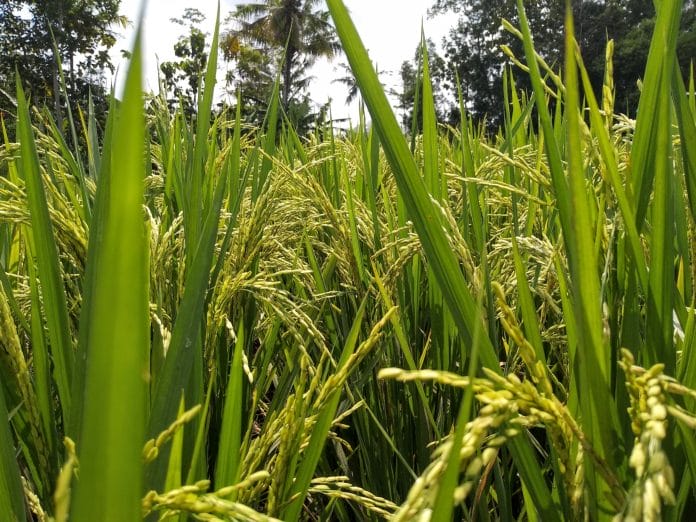With the surge in prices of imported white rice, there has been a notable increase in the demand for domestically produced rice, resulting in a supply shortfall. Locating a bag of locally grown white rice, particularly the Super Special Tempatan 5%, at your neighborhood supermarket has become quite a challenging endeavour in recent times.
The escalation in the cost of imported white rice by Padiberas Nasional Bhd (Bernas), coupled with an export ban, represents a confluence of several factors contributing to the existing scarcity. Malaysia heavily relies on rice imports to meet its domestic demand. Data from the Department of Agriculture reveals that in 2018, Malaysia imported 776,000 tonnes of rice, a figure that escalated to 1.13 million in 2022.
Numerous external factors, such as climate change, deteriorating foreign exchange rates, elevated operational expenditures, and regional conflicts, prompted Bernas to announce a substantial 36% increase in the price of imported white rice on September 1. Furthermore, commencing on July 20, India, the world’s primary exporter of rice, imposed a ban on the export of its non-basmati white rice.
This convergence of circumstances compelled Bernas to elevate the price per metric ton of imported white rice from RM2,350 to RM3,200. Consequently, the cost of a 10kg bag of imported white rice surged from RM34 to RM39.
In contrast, an equivalent bag of domestically cultivated white rice is priced at only RM26, thanks to a government-imposed price ceiling. This price differential underscores the significance of promoting local food security.
The current rice shortage underscores the imperative for Malaysia to bolster its efforts in ensuring food security. To augment productivity and alleviate expenses, the country should allocate substantial resources to research, embrace cutting-edge technologies such as artificial intelligence and precision farming, and prioritize the local production of essential agricultural inputs like fertilizers. These measures are critical in sustaining a resilient and self-sufficient food supply system.
The combination of Internet of Things (IoT) and Artificial Intelligence (AI) can be effectively utilized to improve paddy (rice) growth in Malaysia. Malaysia is a significant rice producer and consumer, and enhancing paddy production is crucial for food security and economic sustainability. Here’s how IoT and AI can be applied:
1. Smart Irrigation Management. IoT sensors can be strategically placed in paddy fields to continuously monitor soil moisture levels, temperature, humidity, and real-time weather conditions. This data is collected and transmitted to a central system where AI algorithms can process it. The AI system can analyse the data to determine the exact water requirements of the paddy fields, and subsequently, create precise irrigation schedules. By doing so, water usage is optimized, reducing water wastage and operational costs. This is especially important in regions where water resources are limited.
2. Crop Health Monitoring. Drones equipped with high-resolution cameras and sensors can be deployed for regular monitoring of the paddy crops. These drones capture images and data related to the health and growth of the rice plants. AI algorithms can then process these images to identify early signs of pests, diseases, or nutrient deficiencies. Early detection allows for timely intervention, reducing crop losses and the need for excessive pesticide use, which is beneficial for both the environment and farmers’ profits.
3. Predictive Analytics. AI can analyse historical data, including past crop yields, weather patterns, and various other relevant factors. By processing this data, AI can provide predictive insights regarding crop yield and quality. These predictions can help farmers optimize planting and harvesting times, allowing them to make informed decisions to maximize productivity. It also aids in risk management and financial planning.
4. Precision Agriculture with IoT Devices. IoT-enabled machinery and equipment, such as tractors, seeders, and harvesters, can be integrated into paddy farming. These devices can be controlled and monitored through IoT systems, allowing for precise and automated farming processes. AI algorithms can optimize the use of resources, including seed distribution and fertilizer application, while also reducing manual labour. This results in more efficient and cost-effective operations.
5. Supply Chain Optimization. AI can be employed to optimize the distribution and logistics of rice products, from farms to consumers. It can analyse transportation routes, storage conditions, and demand patterns to ensure efficient supply chain management. IoT sensors can track the condition of rice in storage and during transportation, ensuring product quality and reducing spoilage.
6. Weather Forecasting and Disaster Management. IoT devices can collect real-time weather data from the fields and surroundings. This data is fed into AI systems which provide advanced weather forecasts and early warnings. For instance, AI can predict extreme weather events, such as heavy rainfall or flooding, which can be particularly damaging to paddy fields. Farmers can take preventative measures in response to these warnings, reducing potential crop losses.
7. Market Price Prediction. AI can analyse market trends, historical price data, and other relevant information to predict future rice prices. This insight is valuable for farmers as it enables them to make informed decisions about when to sell their produce, maximizing their profits. It also helps in planning and managing the financial aspects of farming operations.
8. Education and Training. IoT can be used to disseminate agricultural best practices to farmers. For example, through mobile apps or online platforms, farmers can receive real-time guidance on crop management, pest control, and other farming practices. AI can personalize these recommendations based on the specific needs of individual farmers, making the information more relevant and actionable.
9. Data Sharing and Collaboration. Encouraging farmers to share their data within a secure network can lead to collective insights. AI can analyse this shared data on a larger scale to identify broader trends and solutions, benefiting the entire farming community. Collaborative efforts facilitated by technology can lead to more sustainable and productive farming practices.
10. Government Support. To foster the adoption of IoT and AI in agriculture, the government can play a pivotal role. This support may come in the form of subsidies, incentives, and infrastructure development. Governments can also facilitate the establishment of research and development centres focused on agricultural technology to assist farmers in adopting and adapting to these innovations.
By integrating IoT and AI technologies into the paddy farming process, Malaysian farmers can enhance their yields, reduce operational costs, and improve sustainability. This not only contributes to the food security of the nation but also supports economic growth in the agricultural sector.
By Prof. Ts. Dr. Manjit Singh Sidhu, Professor at the College of Computing and Informatics, Universiti Tenaga Nasional (UNITEN), Fellow of the British Computer Society, Chartered IT Professional, Fellow of the Malaysian Scientific Association, Senior IEEE member and Professional Technologist MBOT Malaysia









